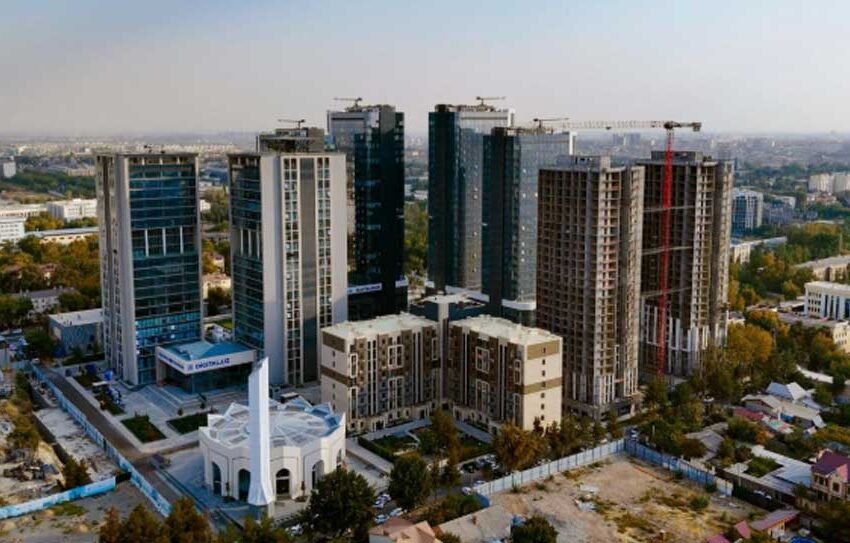BREEAM Rating Levels: What Each One Means?

Construction sites’ sustainability performance is evaluated using BREEAM (Building Research Establishment Environmental Assessment Method) rating scales. Pass, Good, Very Good, Excellent, and Outstanding are the possible ratings. A “Good” denotes higher-than-average environmental performance, while a “Pass” denotes basic standards for sustainability. “Excellent” indicates best practices in design and operation, while “Very Good” indicates a building performs significantly above rules and regulations. “Outstanding” is the highest rating, indicating outstanding performance and inventiveness. Points are earned in areas such as materials, transportation, health, and energy to reach each level. Buildings are guaranteed to meet strict ecological requirements through the breeam assessment procedure. Strong environmental commitment and efficiency are demonstrated by getting higher ratings.
Unclassified
Buildings with a BREEAM score of less than 30% are categorised as Unclassified, the first level. These structures are perceived to be performing poorly in terms of environmental sustainability and do not adhere to the fundamental requirements established by the BREEAM structure. Usually, they employ non-sustainable materials, lack energy efficiency features, and pay little attention to how their design and operation will affect the environment. As a result, a building’s market value and reputation may suffer from an unclassified rating. This assessment frequently suggests that the property makes no extra efforts to be sustainable and only complies with the bare minimum required by law.
Pass
Buildings with a score of 30% or higher are promoted to the next level, called Pass. This rating reflects the fundamental adherence to the principles of sustainability. Structures that receive a Pass rating typically fulfil legal requirements and show some consideration for lessening their negative effects on the surroundings. This rating is typically considered an entry-level accreditation, even though it shows some advancement above the lowest thresholds. Although obtaining a Pass may continue to serve as a starting point for some smaller or more budget-constrained projects, creators who want to demonstrate a significant commitment to sustainability typically aim to surpass this stage.
Good
Buildings that receive a score of 45% or higher are rated as good. It demonstrates that a more proactive strategy for sustainability has been adopted by the construction process. At this stage, the building begins to include more considerate elements related to the quality of the indoor environment, choice of materials, water conservation, and energy use. When a group of contractors receives a good rating, it indicates that they have worked hard to go above and beyond the requirements set forth by the government and are probably employing responsible construction methods. Several developments now aim for this degree, especially when a company’s branding or corporate social responsibility objectives include responsibility for the environment.
Very Good
Buildings with a score of 55% or higher are eligible for the Very Good rating. Powerful sustainability performance is reflected in this rating, which is frequently sought after by developers and companies who want to design structures that are not only energy-efficient but also long-term pleasant, healthy, and profitable. Effective heating and cooling systems, improved daylighting, high-quality air, and thoughtful transport connections are all characteristics of a Very Good rated building. Additionally, it exhibits a comprehensive design methodology that takes sustainability into account from the very beginning of design to the operation following construction. A Very Good rating quickly takes the place of the lowest acceptable standard for new construction in numerous sectors, most notably public buildings and business-related real estate.
Excellent
A building that receives an excellent rating—70% or higher—performs noticeably better than average in terms of sustainability. It denotes a high degree of creativity and environmental consideration. These kinds of constructions improve residents’ happiness and have a positive impact on the neighbourhood, in addition to lowering carbon emissions and resource consumption. These structures frequently have smart water and energy management systems, innovative technology, and architectural elements that support worker happiness and efficiency. A development with an excellent rating is seen as a pioneer in green building and is frequently used to communicate quality and environmental awareness to prospective tenants, buyers, or investors.
Outstanding
Outstanding is the highest BREEAM rating that can be given to projects with a score of 85% or higher. This ranking is incredibly uncommon and reflects a very high level of environmental sustainability. Usually, it is linked to flagship initiatives that push the limits of environmentally friendly building and design. Net-zero or even carbon-positive buildings—those that generate more energy than they use—are more likely to have an Outstanding rating. They frequently make use of advanced materials, passive construction concepts, and energy from renewable sources. They also usually take into account wider social as well as environmental effects, like biodiversity, community involvement, and long-term flexibility. These structures are frequently innovative case studies that set standards for the industry as a whole.
Final Words:
A thorough guide to a building’s environmental impact, BREEAM rating levels assist participants in assessing, enhancing, and celebrating their environmentally friendly initiatives. Every level, from the entry-level Pass to the top-tier Outstanding, demonstrates a greater dedication to creating an environmentally conscious future.





